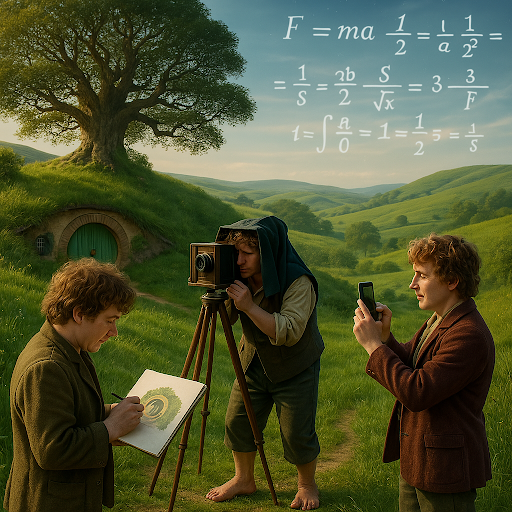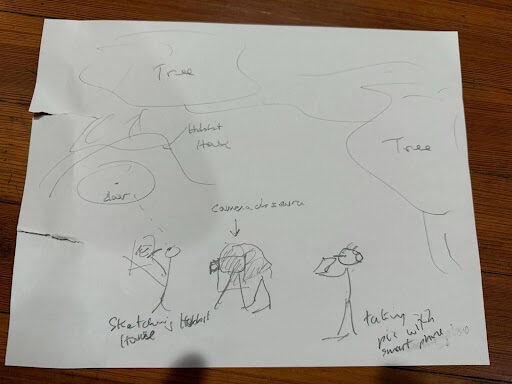By Lew Ludwig

I'm starting to see real progress. At workshops and webinars, more colleagues are reaching out with, "Hey, I gave AI a try!" That's the point—whether you end up using AI or not, you've got to try it in your own teaching arena to understand what it's really capable of and where it still falls short. And that brings me to the conversations I keep hearing.
The conversation often goes like this: "I used AI to create homework questions for my class, and they were pretty good! But when it came to generating the solution key, it got the answers wrong." There's almost a sigh of relief in the speaker's voice at this point, as if to say, "Ah, I’m still relevant. I’m still needed." When I ask whether they were using a free or a paid model, the response is often something like, "You don't have to defend AI." It's a conversation I've had more than once, always circling the same core feeling: cautious curiosity, colored by a desire to feel valued and essential.
This interaction reminds me of a historical moment in the art world. Imagine you're a talented sketch artist in the early 19th century. You've spent years perfecting your craft, and your sketches capture life in vivid detail. Now, along comes a whippersnapper with something called a "camera obscura." With plenty of setup—subjects holding still, intricate chemical processes—it can produce a black and white image of a still life. It's a neat trick, but you know it can't capture the dynamic energy of an action scene, and its grainy results can't compare to the full palette of your colored pencils.
This is precisely the difference between your well-crafted homework solution keys and what the free versions of AI churn out: the questions are there, but the solutions? Not so much. It's functional but limited—like that early camera obscura.
Now fast-forward to today. Would you still be sketching with pencils when you could capture the same scene with your smartphone in an instant, then enhance it with filters, adjust the lighting, and share it globally in seconds?
That's precisely the situation with a free AI model versus a paid one. The free version is capable of generating decent questions, but when it comes to solution keys, it often misses the mark. But ask yourself—how many times have you manually worked through the disk and washer method, or painstakingly solved for eigenvalues? Is that time best spent on routine tasks, or could it be used to deepen your teaching, or maybe even to take a moment for a walk to clear your mind?
Enter the paid AI models—more like the latest smartphone, delivering immediate, reliable results. That means more time for feedback, office hours, or simply being more present for your students. It's not about replacing us entirely, but about using the right tool for the job. With a paid model, you can get the solution keys you need without having to reinvent the wheel every time. This isn't to say that human expertise isn't valuable—far from it. There will always be a place for our insight and creativity. But when it comes to repetitive tasks, why not let the more efficient tool take care of it?
Even though AI may serve as a handy shortcut—much like snapping a quick photo with the latest smartphone—there are situations where the art of sketching by hand remains invaluable. Consider those moments when you need to capture subtle nuances, add a personal touch, or illustrate a complex idea with spontaneity and emotion. A hand-drawn sketch can convey a level of detail and warmth that a perfect digital image simply cannot match.
This idea extends naturally to teaching. Sure, AI might generate practice problems or even solution keys with impressive speed, but what you bring to the classroom goes far beyond routine tasks. Your unique insights and your ability to foster genuine connections. Just like a skilled artist's hand-drawn sketch, your human touch—your experience, creativity, and empathy—adds depth and meaning to learning.
The future's successful teachers will be those who prioritize their students' well-being, focusing on nurturing rapport and fostering community—principles that lie at the heart of the MAA's core values. Remember, your ability to connect with and care for your students is something no machine can replicate. Embrace the efficiency of AI when it makes sense, but never forget that the personal and the nuanced aspects of teaching are what truly elevate student learning.
What's New?
There was a time—not long ago—when asking an AI to draw felt a bit like asking your toddler nephew to illustrate your wedding invitation: well-meaning, occasionally charming, but more often riddled with backwards hands, floating eyeballs, and text that looked like it had been written during a minor earthquake.
But the terrain is shifting. The latest multimodal models from OpenAI and Google don’t just describe images—they compose them, pixel by pixel. These models now generate visuals directly through their language models, token by token, allowing for a remarkable leap in coherence and detail. No more farming out the job to a separate, less capable image generator. The result? Images where context actually matters—where a sketch of a smiling cat in a wizard hat doesn’t turn into a tiger in a top hat with the word “smeagle” floating midair.
Even more exciting, this next generation of tools can take your back-of-the-napkin doodles and elevate them into studio-quality visuals. For this month’s image, I started with the hand-drawn sketch below to show the AI where I wanted things placed. It "read" my image in surprising detail, even narrating what it saw like an attentive museum guide. A few back-and-forth exchanges later, and suddenly—I had not one, but three Hobbits faithfully conveying my story. Turns out, even in this digital age, a rough sketch and a bit of conversation can still lead to something magical.

AI Disclosure: This column was created using the AI Sandwich writing technique.

Lew Ludwig is a professor of mathematics and the Director of the Center for Learning and Teaching at Denison University. An active member of the MAA, he recently served on the project team for the MAA Instructional Practices Guide and was the creator and senior editor of the MAA’s former Teaching Tidbits blog.